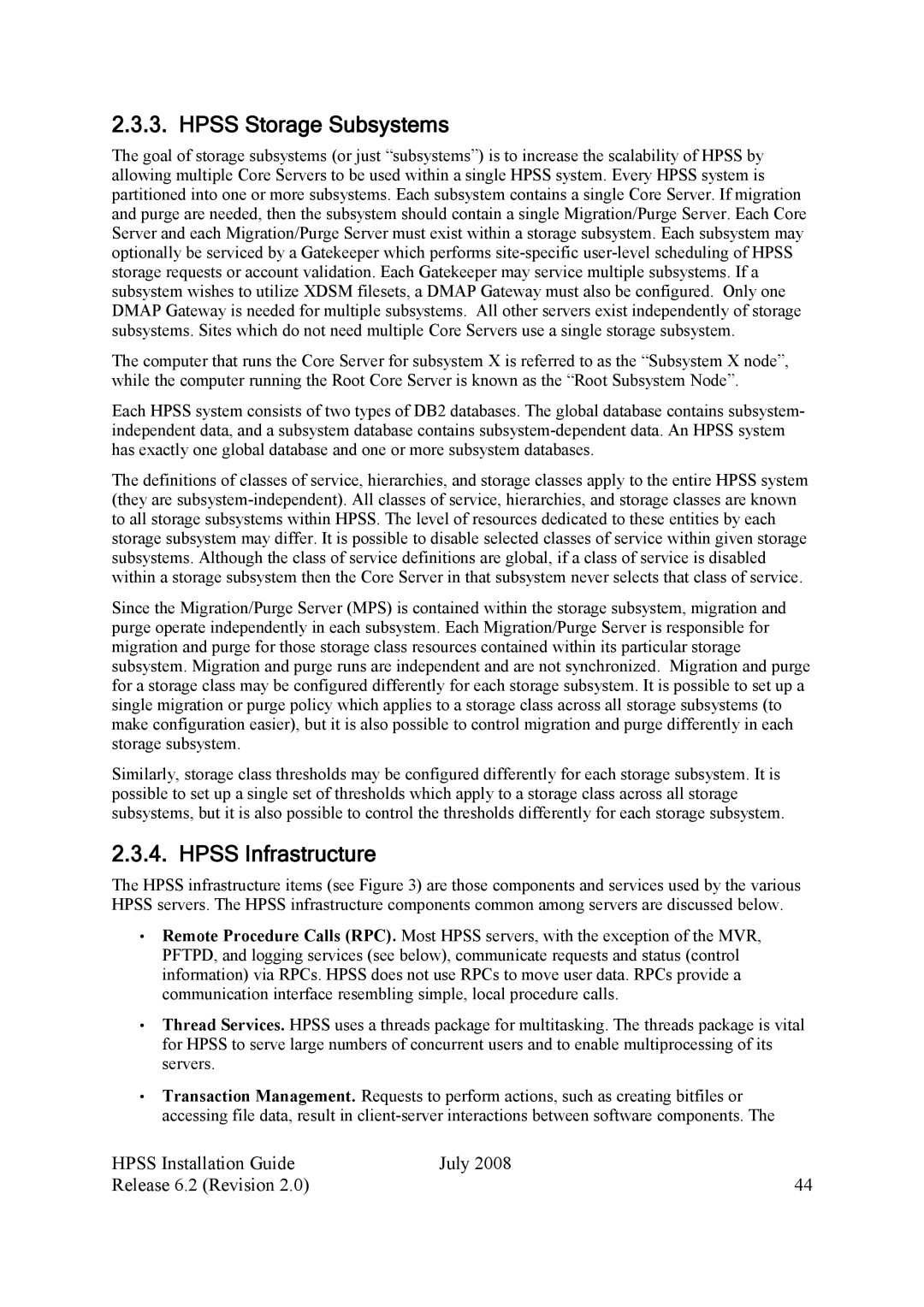2.3.3. HPSS Storage Subsystems
The goal of storage subsystems (or just “subsystems”) is to increase the scalability of HPSS by allowing multiple Core Servers to be used within a single HPSS system. Every HPSS system is partitioned into one or more subsystems. Each subsystem contains a single Core Server. If migration and purge are needed, then the subsystem should contain a single Migration/Purge Server. Each Core Server and each Migration/Purge Server must exist within a storage subsystem. Each subsystem may optionally be serviced by a Gatekeeper which performs
The computer that runs the Core Server for subsystem X is referred to as the “Subsystem X node”, while the computer running the Root Core Server is known as the “Root Subsystem Node”.
Each HPSS system consists of two types of DB2 databases. The global database contains subsystem- independent data, and a subsystem database contains
The definitions of classes of service, hierarchies, and storage classes apply to the entire HPSS system (they are
Since the Migration/Purge Server (MPS) is contained within the storage subsystem, migration and purge operate independently in each subsystem. Each Migration/Purge Server is responsible for migration and purge for those storage class resources contained within its particular storage subsystem. Migration and purge runs are independent and are not synchronized. Migration and purge for a storage class may be configured differently for each storage subsystem. It is possible to set up a single migration or purge policy which applies to a storage class across all storage subsystems (to make configuration easier), but it is also possible to control migration and purge differently in each storage subsystem.
Similarly, storage class thresholds may be configured differently for each storage subsystem. It is possible to set up a single set of thresholds which apply to a storage class across all storage subsystems, but it is also possible to control the thresholds differently for each storage subsystem.
2.3.4. HPSS Infrastructure
The HPSS infrastructure items (see Figure 3) are those components and services used by the various HPSS servers. The HPSS infrastructure components common among servers are discussed below.
•Remote Procedure Calls (RPC). Most HPSS servers, with the exception of the MVR, PFTPD, and logging services (see below), communicate requests and status (control information) via RPCs. HPSS does not use RPCs to move user data. RPCs provide a communication interface resembling simple, local procedure calls.
•Thread Services. HPSS uses a threads package for multitasking. The threads package is vital for HPSS to serve large numbers of concurrent users and to enable multiprocessing of its servers.
•Transaction Management. Requests to perform actions, such as creating bitfiles or accessing file data, result in
HPSS Installation Guide | July 2008 |
Release 6.2 (Revision 2.0) | 44 |
